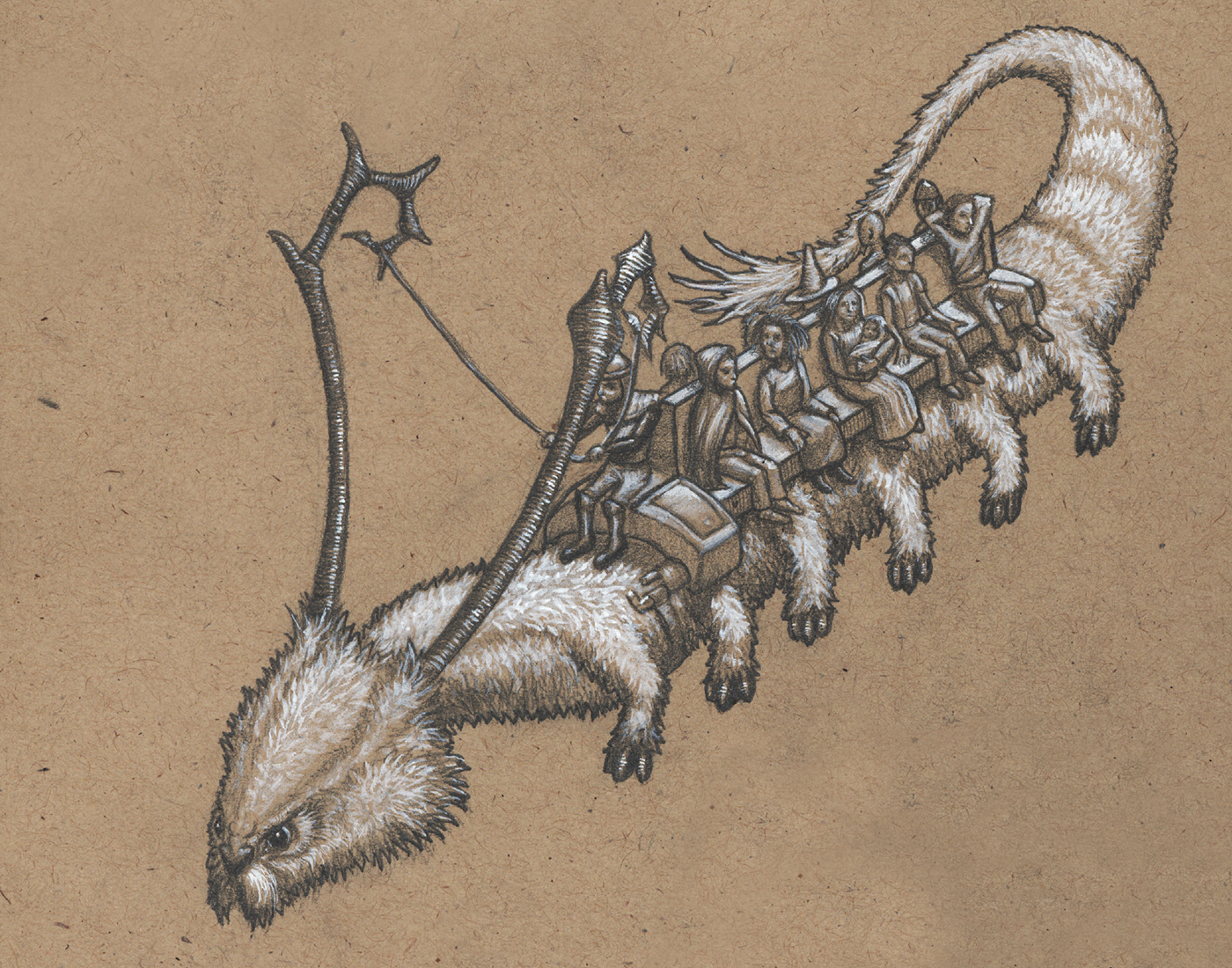Lorglin
Bowmark glanced at the sky and then behind himself. Human travelers rode on a lorglin, a serpent shaped multi-legged reindeer, pulling a heavily laden wagon. Bowmark turned to face forward again and raised his hand with fingers spread wide. “Safe travel to you.”
The cargo-carriers Bowmark wanted to call centipede-elk, all laden with many boxes and people. A human riding the last lorglin rubbed a bow over a box covered with strings, making musical tones. Someone sang in a language Bowmark did not know.
Basic Information
Anatomy
Like a mammalian centipede, this twelve-legged long furry creature sports a massive pair of curling horns, as well as a surprisingly human-like face.
Genetics and Reproduction
Male/Female sexual reproduction. Mating season is flexible and highly dependent on the proper environmental factors, leading to relatively slow reproduction rates. Females gestate for 440 days, then give live birth to between one and three babies.
Growth Rate & Stages
All babies are born without horns. While both male and females grow horns after the first year, females' come in earlier. This generally leads to a female-led pecking order. Lorglin live for about sixty years, the last ten or fifteen of which is usually dedicated to sharing the child-rearing responsibilities.
Ecology and Habitats
Lorglin are ideally suited to moderate and cool hills and mountains. They are excellent at climbing.
Dietary Needs and Habits
Grasses and leaves compose the majority of their diet. As grazers they spend most of their time eating or sleeping.
Biological Cycle
Lorglin molt their thick winter coat in the summer.
Additional Information
Social Structure
Females generally rule the roost, but the competition is not usually fierce. Males seek to impress the top ranked females with dances and acrobatics. When physical fights occur they are usually brief and between young males and females. All members of a heard will surround and protect the young from predation, using their size, speed and antlers to intimidate most would-be predators.
Domestication
Lorglin are very passive creatures unless their young are threatened. Domestication is quite easy. Feed them regularly and treat them well and they will bear almost any burden without complaint. Their strength and speed makes them ideally suited to long land expeditions.
They are also often used in sport where they are ridden through elaborate obstacle courses.
Uses, Products & Exploitation
Besides transport and sport, their winter fur is harvested for bedding and fill for coats.
Facial characteristics
Besides their incredible utility for transport, many humans find lorglin desirable due to their facial similarity to humans. Their emotional expression is similar enough to evoke many different myths about their origin.
Geographic Origin and Distribution
Most temperate zones that humans inhabit.
Lifespan
60 years
Average Height
2 meters, 3 including horns
Average Weight
5,000 kg (11023 lbs)
Average Length
9 meters
Body Tint, Colouring and Marking
Most are white, tan or yellow. Some lorglin have small spots of darker color as well.




Comments